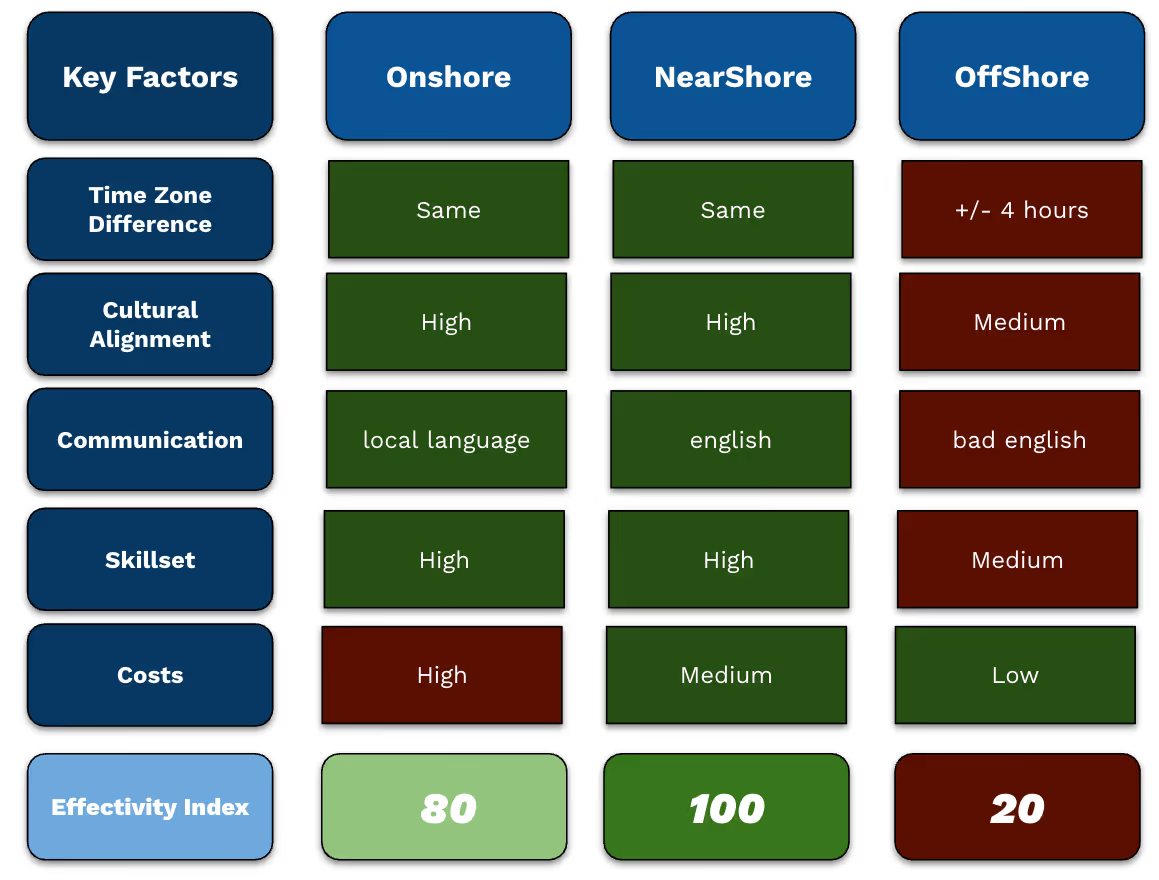Nearshore versus Offshore
It`s not about skillset, it`s about cultural challenges
Our Placement Service
We recommend Nearshore
Nearshore software development offers several advantages over offshore outsourcing, particularly in terms of communication, collaboration, and efficiency.
One of the biggest benefits is the geographical proximity, which results in overlapping time zones. This makes real-time communication much easier, reducing delays in decision-making and improving overall project coordination. Teams can collaborate more effectively through frequent meetings, quick feedback loops, and smoother workflows. In contrast, offshore development often involves significant time zone differences, leading to delays and limited real-time interaction.
Another key advantage is cultural and linguistic alignment. Nearshore teams often share similar business cultures, work ethics, and languages, reducing the risk of misunderstandings and improving team dynamics. Offshore teams, on the other hand, may have greater cultural and language barriers, which can lead to miscommunication and require additional management efforts.
Nearshore development also provides greater flexibility and ease of travel. If in-person meetings or onsite visits are needed, travel is quicker and more cost-effective compared to working with offshore teams in distant locations. This can be crucial for building stronger relationships, ensuring project alignment, and resolving complex challenges more efficiently.
While offshore outsourcing may offer lower labor costs and seams to be cheaper, nearshore development strikes a balance between cost savings and high-quality collaboration. It provides a more agile, responsive, and efficient software development process, making it a strong choice for businesses that value seamless communication and long-term project success.
Advantages Matrix

Advantages of Nearshore
- easy real-time communication
- reducing delays in decision-making and improving overall project coordination
- share similar business cultures, work ethics, and languages, reducing the risk of misunderstandings and improving team dynamics
- travel is quicker and more cost-effective
- balance between cost savings and high-quality collaboration

